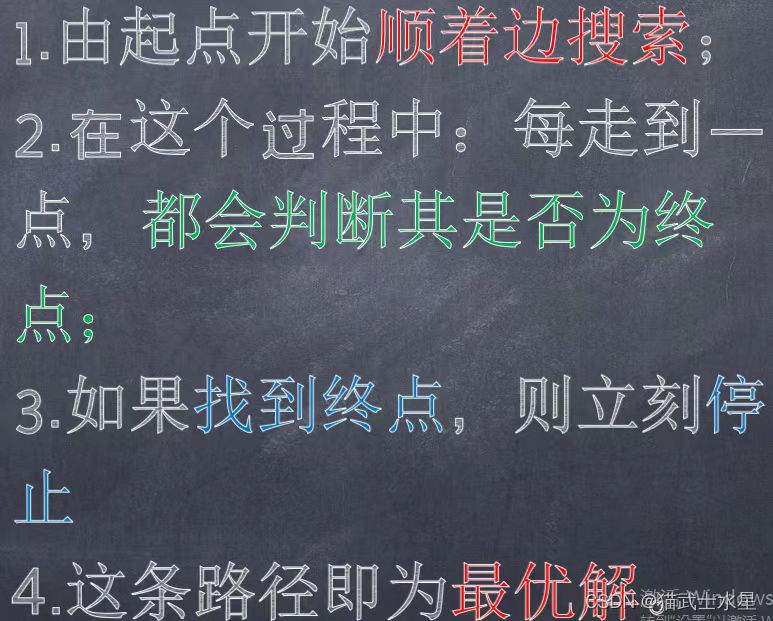广度优先搜索(C++代码实现)
发布时间:2023年12月31日
广度优先搜索(C++代码实现)

思考一下,上次的深度优先搜索是从起点开始顺时针的顺序进行方向选择下一个路径点;那么这次的广度优先搜索,顾名思义,就是这个点可以移动到的下一步位置的所有点都进行测试,再以这些点为路径的头点,进行下一个点的搜索…

?
#include <bits/stdc++.h>
using namespace std;
const int N= 55;
struct node {
int x, y, step;};
queue<node> q;
int mp[N][N],vis[N][N];
int dir[4][2] = {-1,0,0,1,1,0,0,-1};
int n, m, sx,sy, ex, ey;
bool check(int x, int y) {
return x >= 1 && x <= n && y >= 1 && y<= m && !vis[x][y] && mp[x][y] != 1;
}
void bfs(){
//1.起点入队
vis[sx][sy] = 1;
node t= {sx,sy, 0};
q.push(t);
//2.遍历队列
while (!q.empty()) {
node f = q.front(); q.pop();
//沿着所有方向搜索,搜索所有可搜索的点
for (int i=0;i<4;i++) {
int nx = f.x + dir[i][0];
int ny = f.y + dir[i][1];
if (check(nx,ny)) {
vis[nx][ny] = 1;
node tmp = {nx,ny,f.step + 1}; q.push(tmp);
if (nx == ex && ny == ey)
return;
}
}
}
}
int main (){
cin >> n >> m;
for (int i = 1; i <= n; i++) {
for (int j= 1;j<= m;j++) {
cin >> mp[i][j];}}
cin >> sx >> sy>> ex>> ey; bfs();
cout << q.back().step;
return 0;
}
文章来源:https://blog.csdn.net/mwssx/article/details/135308825
本文来自互联网用户投稿,该文观点仅代表作者本人,不代表本站立场。本站仅提供信息存储空间服务,不拥有所有权,不承担相关法律责任。 如若内容造成侵权/违法违规/事实不符,请联系我的编程经验分享网邮箱:chenni525@qq.com进行投诉反馈,一经查实,立即删除!
本文来自互联网用户投稿,该文观点仅代表作者本人,不代表本站立场。本站仅提供信息存储空间服务,不拥有所有权,不承担相关法律责任。 如若内容造成侵权/违法违规/事实不符,请联系我的编程经验分享网邮箱:chenni525@qq.com进行投诉反馈,一经查实,立即删除!
最新文章
- Python教程
- 深入理解 MySQL 中的 HAVING 关键字和聚合函数
- Qt之QChar编码(1)
- MyBatis入门基础篇
- 用Python脚本实现FFmpeg批量转换
- 华为OD机试真题-英文输入法--Python-OD统一考试(C卷)
- 《Python数据分析技术栈》第05章 06 矩阵(Matrices)
- OR-3120——IGBT驱动光耦,替代HCPL-3120,FOD3120,TLP250H等等
- Conda环境基础使用方法
- 操作测评轻松搞定:亚马逊鲲鹏系统使用者的反馈与建议
- 【flink番外篇】9、Flink Table API 支持的操作示例(12)- Over Windows(有界和无界的over window)操作
- 嵌入式备赛:PWM控制及源代码解析
- opengl和directx中,渲染管线是什么?
- 代码随想录算法训练营第2天 | 977.有序数组的平方 ,209.长度最小的子数组 ,59.螺旋矩阵II
- sdwan跨境专线方案